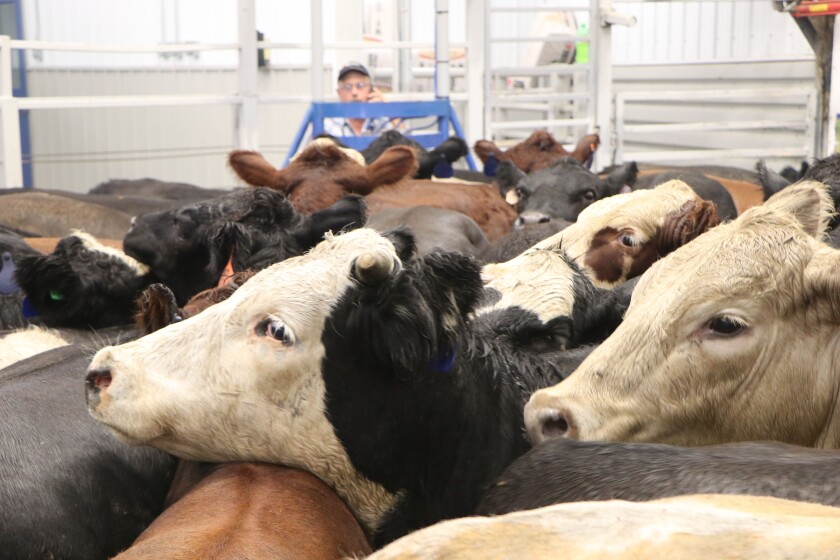Opening Development Prospective: Bagley Risk Management Approaches
Opening Development Prospective: Bagley Risk Management Approaches
Blog Article
The Advantages of Livestock Threat Security (LRP) Insurance Explained
Livestock Risk Protection (LRP) insurance serves as a vital device for livestock manufacturers browsing the uncertain surface of market variations and unforeseen losses. The real worth and details of this insurance instrument go much past simple security-- they symbolize a positive method that can redefine the landscape for livestock manufacturers.
Financial Defense Versus Market Volatility

LRP insurance coverage provides producers with a beneficial device to take care of rate threat, offering protection that can help balance out potential losses resulting from unfavorable market activities. In essence, LRP insurance coverage offers as an aggressive threat management technique that encourages livestock manufacturers to navigate the difficulties of a dynamic market landscape with higher self-confidence and safety.
Insurance Coverage for Unforeseen Losses
Livestock Danger Protection (LRP) insurance offers extensive coverage to safeguard livestock producers versus unanticipated losses in the unpredictable market landscape. This insurance offers security in cases where unforeseen events such as condition episodes, natural calamities, or significant market value variations can result in financial challenges for livestock manufacturers. By having LRP coverage, producers can minimize the risks connected with these unexpected circumstances and ensure a degree of financial security for their procedures.
One of the key advantages of LRP insurance coverage is that it allows producers to tailor their coverage based on their details requirements and run the risk of resistance. This versatility enables producers to customize their policies to safeguard against the kinds of losses that are most pertinent to their operations. Furthermore, LRP insurance policy uses an uncomplicated cases process, assisting manufacturers swiftly recuperate from unforeseen losses and resume their procedures without substantial disruptions.
Threat Management for Livestock Producers

One secret facet of danger management for livestock manufacturers is diversity. By diversifying their livestock profile, producers can spread danger throughout various species or types, minimizing the influence of a possible loss in any solitary area. Additionally, preserving detailed and accurate documents can assist manufacturers determine patterns, trends, and prospective areas of danger within their procedures.
Insurance policy products like Livestock Danger Protection (LRP) can likewise play a crucial role in risk management. LRP insurance provides manufacturers with a safeguard against unanticipated price drops, providing them assurance and anchor financial safety in times of market instability. On the whole, a detailed risk management strategy that integrates record-keeping, insurance, and diversity can assist animals producers effectively navigate the difficulties of the market.
Tailored Policies to Suit Your Needs
Customizing insurance coverage policies to straighten with the particular needs and circumstances of animals producers is critical in ensuring thorough danger management approaches (Bagley Risk Management). Animals producers encounter a myriad of difficulties unique to their sector, such as varying market prices, uncertain weather condition patterns, and pet health and wellness concerns. To resolve these dangers effectively, insurance coverage companies offer customized plans that deal with the varied needs of animals producers
One secret aspect of customized animals insurance coverage policies is the capacity to customize insurance coverage limits based on the dimension of the operation and the kinds of animals being raised. This adaptability ensures that manufacturers are under-insured or not over-insured, enabling them to shield their possessions adequately without her response paying for unneeded coverage.
Furthermore, customized plans may likewise consist of details provisions for different kinds of animals operations, such as dairy ranches, ranches, or fowl producers. By tailoring insurance coverage to match the unique attributes of each procedure, insurance companies can provide detailed defense that addresses the particular dangers dealt with by various sorts of animals manufacturers. Ultimately, choosing a tailored insurance policy can offer assurance and monetary protection for animals manufacturers despite unpredicted obstacles.
Government-Subsidized Insurance Policy Options
In taking into consideration danger management methods tailored to the certain needs of animals producers, it is necessary to explore the Government-subsidized insurance policy options offered to mitigate economic uncertainties successfully. Government-subsidized insurance coverage alternatives play an important duty in offering affordable danger monitoring tools for livestock manufacturers.
One noticeable example of a government-subsidized insurance policy alternative is the Livestock Danger Defense (LRP) program, which provides security against a decline in market value. Via LRP, producers can insure their animals at a specific protection level, thus guaranteeing a minimal rate for their animals at the end of the insurance coverage duration. By leveraging these subsidized insurance policy options, livestock manufacturers can enhance their economic security and security, inevitably adding to the resilience of the agricultural industry all at once.
Verdict

In verdict, Livestock Threat Protection (LRP) insurance policy uses financial security against market volatility and unanticipated losses for livestock manufacturers. Government-subsidized insurance choices further improve the accessibility and cost of LRP insurance for producers.
Animals Risk Security (LRP) insurance serves as an essential device for livestock manufacturers browsing the unpredictable surface of market variations and unexpected losses.In today's uncertain market environment, visit the site livestock manufacturers can profit considerably from protecting economic protection against market volatility with Animals Threat Protection (LRP) insurance coverage. In significance, LRP insurance policy serves as a positive threat monitoring strategy that equips livestock manufacturers to browse the obstacles of a vibrant market landscape with greater confidence and safety and security.
Livestock Danger Security (LRP) insurance policy supplies comprehensive coverage to protect livestock producers against unexpected losses in the unstable market landscape.In final thought, Livestock Danger Security (LRP) insurance coverage supplies monetary security against market volatility and unexpected losses for livestock producers.
Report this page